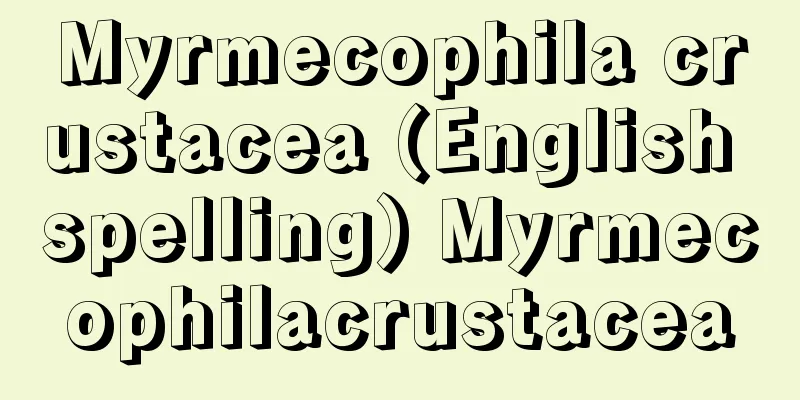Fushimi Castle

|
Hirayama-jiro (castle on a flatland mountain) was located in Fushimi-ku, Kyoto City, Kyoto Prefecture. In 1591 (Tensho 19), Toyotomi Hideyoshi handed over the position of regent and Jurakudai (Kamigyo-ku, Kyoto City) to his nephew Toyotomi Hidetsugu, and the castle was originally built as a retirement residence in Fushimi for Hideyoshi, who had become Taiko. In 1593 (Bunroku 2), with the birth of his eldest son, Sutemaru (Toyotomi Hideyori), large-scale renovations were carried out on Fushimi Castle in anticipation of handing Osaka Castle over to Hideyori in the future. In conjunction with this renovation, large-scale civil engineering work was also carried out to divert the flow of the Uji River and build a road to Ogura Pond. Furthermore, Mukojima Castle, a subsidiary castle of Fushimi Castle, was built on the opposite bank of the Uji River, and the development of the castle town also began. Hideyoshi commuted between Osaka Castle and Fushimi Castle, but spent most of his later years in Fushimi Castle. He passed away in Fushimi Castle on August 18, 1598 (Keicho 3), entrusting Toyotomi Hideyori to the Five Elders. In June 1600 (Keicho 5), on the eve of the Battle of Sekigahara, Tokugawa Ieyasu began to attack the Uesugi clan of Aizu, and at that time, Ieyasu's castle steward Torii Mototada was stationed in Fushimi Castle. Kobayakawa Hideaki, Shimazu Yoshihiro and 40,000 other soldiers attacked and captured the castle, which became one of the direct triggers of the Battle of Sekigahara. Ieyasu entered Fushimi Castle in March 1601 (Keicho 6), and Todo Takatora was appointed as the construction magistrate, and began the reconstruction of Fushimi Castle along with Nijo Castle (Nakagyo Ward, Kyoto City). In 1603 (Keicho 8), Ieyasu was appointed Shogun at Fushimi Castle and established the Edo Shogunate. In 1605 (Keicho 10), Ieyasu moved to Nijo Castle for a time, but returned to Fushimi Castle when the main citadel was completed. The Shogunate used Nijo Castle for ceremonial purposes and Fushimi Castle as a residence, but in 1619 (Genwa 5) after the Siege of Osaka, it was decided to abandon Fushimi Castle as it would be difficult to maintain both castles in accordance with the spirit of the One Castle per Province Law. The area around the castle was then reclaimed and used as farmland. In 1964 (Showa 39), an amusement park called Fushimi Momoyama Castle Land was built on the castle site, and a five-story, six-story replica large castle tower and a three-story, four-story replica small castle tower made of reinforced concrete were constructed, along with a yagura gate. The amusement park was closed after that, but the buildings were donated to Kyoto City, which developed it into Fushimi Momoyama Castle Sports Park. The interior of the replica castle tower and other structures is currently closed to the public because it does not meet earthquake resistance standards. It is about a 15-minute walk from Momoyama Station on the JR Nara Line. ◇It is also commonly known as Momoyama Castle. Source: Kodansha Encyclopedia of Japanese Castles Information |
|
京都府京都市伏見区にあった平山城(ひらやまじろ)。豊臣秀吉が1591年(天正19)に、甥の豊臣秀次に関白の地位と聚楽第(京都市上京区)を譲ったことにともない、太閤となった秀吉の隠居所として伏見の地に築いた屋敷を起源とした城である。1593年(文禄2)、嫡男の捨丸(豊臣秀頼)が誕生したことにより、将来、大坂城を秀頼に譲ることを想定して、伏見城の大規模な改修が行われた。この改修に伴い、宇治川の流れを変えて巨椋池に街道を通す大規模な土木工事も行われている。さらに、宇治川の対岸に伏見城の支城、向島城が築城され、城下町の整備も始まった。秀吉は大坂城と伏見城を行き来していたが、晩年は伏見城で過ごすことが多くなり、1598年(慶長3)8月18日に、五大老に豊臣秀頼を託して伏見城で没した。1600年(慶長5)6月、関ヶ原の戦い前夜、徳川家康は会津の上杉氏征伐に動き出したが、このとき、伏見城には家康の城代鳥居元忠が在城していた。この伏見城を小早川秀秋、島津義弘ら4万の兵が攻め、落城させたが、これが関ヶ原の戦いの直接のきっかけの一つになった。家康は1601年(慶長6)3月に伏見城に入城し、藤堂高虎が普請奉行に起用されて、二条城(京都市中京区)とともに伏見城の再建に着手した。1603年(慶長8)には、伏見城で征夷大将軍の宣下を受けて江戸幕府を開いた。1605年(慶長10)、家康は一時期二条城に移ったが、本丸部分が完成すると伏見城にもどっている。幕府は二条城を儀典用、伏見城を居館用として利用していたが、大坂の陣後の1619年(元和5)、一国一城令の趣旨からも両城の維持は困難として、伏見城の廃城が決定した。その後、城跡一帯は開墾され、農地となった。1964年(昭和39)、城跡に遊園地「伏見桃山城キャッスルランド」が建設され、鉄筋コンクリート製の5重6階の模擬大天守と3重4階の模擬小天守、櫓(やぐら)門などがつくられた。その後、この遊園地は閉園となったが、建物は京都市に寄贈され、同市は伏見桃山城運動公園として整備した。模擬天守などの内部は現在、耐震基準を満たしていないことから非公開となっている。JR奈良線桃山駅から徒歩約15分。◇桃山城とも通称されている。
出典 講談社日本の城がわかる事典について 情報 |
>>: Fushimi Inari Taisha Shrine
Recommend
Yaeko Nogami
Novelist. Born on May 6, 1885 in Usuki-cho, Oita ...
Affine space - Affine space
It is also called a pseudospace. It is a space in ...
Kühne, W.
… The understanding that enzymes are inseparable ...
Henry I - Henry
Norman King of England (reigned 1100-1135). Son of...
Currant
Also known as currant. A general term for several ...
Electrocuting
...It consists of a high-frequency current genera...
Xu Xiá Kè Yóu Jì (English: Travelogue of Xu Xiá)
This book was written by Xu Hongzu (1586-1641) of ...
Maxillaria tenuifolia (English spelling) Maxillaria tenuifolia
…[Koichi Ejiri]. … *Some of the terminology that ...
Samain - Saman (English spelling) Albert Samain
A French Symbolist poet hailed as the "poet ...
Anrokuzan
A military commander of the Tang Dynasty in China...
Gǔ Yŏng (English)
? - Front 8 A Chinese politician during the reign ...
Galen, E.
…Born in Urbino, after graduating from the Univer...
smart
〘Adjective-verb〙 (smart)① A state in which actions...
Slave trade
Trade in buying and selling slaves has existed si...
Hojo Soun
The first head of the Hojo clan (later Hojo clan)...









